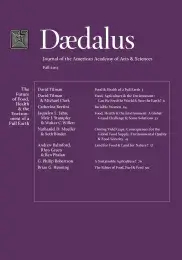Land for Food & Land for Nature?
Opinions on how to limit the immense impact of agriculture on wild species are divided. Some think it best to retain as much wildlife as possible on farms, even at the cost of lowering yield (production per unit area). Others advocate the opposite: increasing yield so as to limit the area needed for farming, and then retaining larger areas under natural habitats. Still others support a mixture of the two extremes, or an intermediate approach. Here we summarize a model designed to resolve this disagreement, and review the empirical evidence available to date. We conclude that this evidence largely supports the second, so-called land-sparing approach to reconciling agriculture and biodiversity conservation, but that important questions remain over the generality of these findings for different biota and for ecosystem services, how best to increase yields while limiting environmental externalities, and whether there are effective, socially just, and practical mechanisms for coupling yield growth to habitat retention and restoration.
Cultivating crops and keeping livestock have radically transformed the scale and complexity of human society, and have had greater impacts on the rest of the planet than any other human activity.1 Crop production and permanent pasture now cover a combined 38 percent of Earth’s ice-free land surface, including around half of all former temperate deciduous forests and savannas, and almost three-quarters of the world’s grasslands. Continued conversion for farming is the leading cause of tropical deforestation by a considerable margin. Taken together, agriculture and related land use are responsible for 17–31 percent of all anthropogenic greenhouse gas emissions. On top of this, farming accounts for around 70 percent of human use of fresh water, and the manufacture of inorganic fertilizers is the main reason for the doubling in nitrogen fixation and resulting rise in eutrophication seen over the past century. Given the magnitude of these environmental alterations it is not surprising that agriculture threatens many more species with extinction than any other sector.2
Serious as the situation already is, it seems inescapable that the footprint of farming will increase. The expansion of the human population from about . . .
